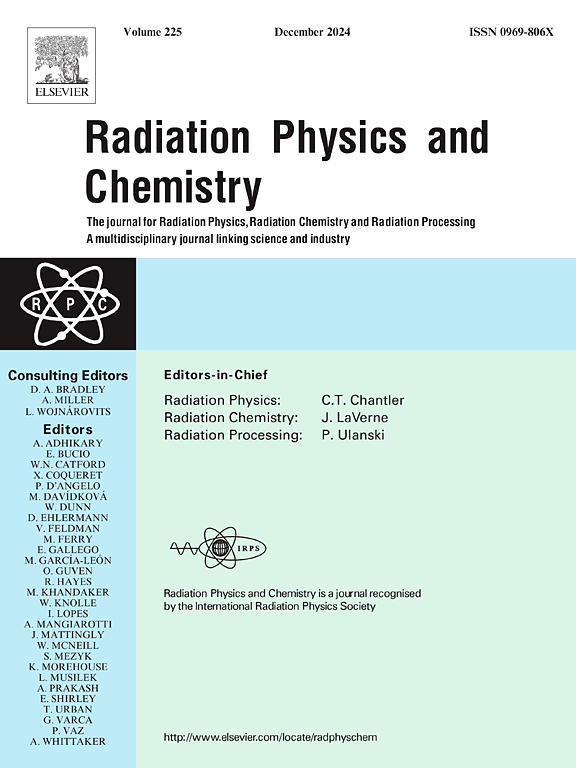Performance of the LABDOS01 spectrometer in dosimetric measurements
IF 2.8
3区 物理与天体物理
Q3 CHEMISTRY, PHYSICAL
引用次数: 0
Abstract
This paper describes the performance of the LABDOS01, a silicon diode-based spectrometer suitable for dose measurements in mixed radiation fields. The instrument is currently being used in two high-altitude environmental dose monitoring projects: SAMADHA (South Atlantic Magnetic Anomaly Dosimetry at High Altitude) at Chacaltaya (Bolivia, 5240 m a.s.l.) and CORDIAL (COsmic Rays Dosimetry In Antarctic Latitudes) at the Concordia station (Antarctica, 3233 m a.s.l.). Before installing two of these devices at the measurement sites, the detectors were tested on flight routes covering a wide range of geomagnetic latitudes. The collected dosimetric data were compared with the expectations derived by the CARI-7A software, which provides the absorbed dose rate in silicon due to cosmic ray secondaries at a given position on the Earth. The measured dose rates along the flights at variable altitude and rigidity cutoff agree well with the simulated ones. By analyzing the spectrum of the energy deposited in the silicon layer, we derive an empirical method to approximately evaluate the ambient dose equivalentLABDOS01光谱仪在剂量学测量中的性能
本文介绍了适用于混合辐射场剂量测量的LABDOS01型硅二极管光谱仪的性能。该仪器目前正在两个高海拔环境剂量监测项目中使用:Chacaltaya(玻利维亚,海拔5240米)的SAMADHA(高海拔南大西洋磁异常剂量测定)和Concordia站(南极洲,海拔3233米)的CORDIAL(南极纬度宇宙射线剂量测定)。在测量地点安装这两个装置之前,探测器在覆盖广泛地磁纬度的飞行路线上进行了测试。收集的剂量学数据与CARI-7A软件得出的预期结果进行了比较,后者提供了在地球上给定位置上由于宇宙射线二次辐射而在硅中的吸收剂量率。在变高度和刚性截止点飞行时的剂量率测量值与模拟值吻合较好。通过分析沉积在硅层中的能量谱,我们推导出一种经验方法来近似评估环境剂量当量H *(10),这是一个与环境辐射引起的生物损伤直接相关的量。
本文章由计算机程序翻译,如有差异,请以英文原文为准。
求助全文
约1分钟内获得全文
求助全文
来源期刊

Radiation Physics and Chemistry
化学-核科学技术
CiteScore
5.60
自引率
17.20%
发文量
574
审稿时长
12 weeks
期刊介绍:
Radiation Physics and Chemistry is a multidisciplinary journal that provides a medium for publication of substantial and original papers, reviews, and short communications which focus on research and developments involving ionizing radiation in radiation physics, radiation chemistry and radiation processing.
The journal aims to publish papers with significance to an international audience, containing substantial novelty and scientific impact. The Editors reserve the rights to reject, with or without external review, papers that do not meet these criteria. This could include papers that are very similar to previous publications, only with changed target substrates, employed materials, analyzed sites and experimental methods, report results without presenting new insights and/or hypothesis testing, or do not focus on the radiation effects.
 求助内容:
求助内容: 应助结果提醒方式:
应助结果提醒方式:


